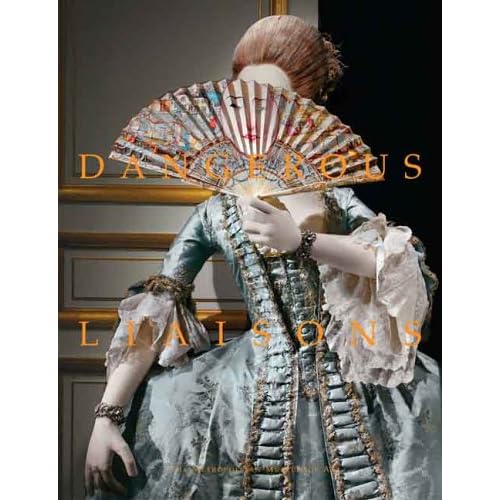Dangerous Liaisons: Fashion and Furniture in the Eighteenth Century (Metropolitan Museum of Art)
Category: Books,Arts & Photography,Graphic Design
Dangerous Liaisons: Fashion and Furniture in the Eighteenth Century (Metropolitan Museum of Art) Details
Book Description During the reigns of Louis XV and XVI, fashion and furniture in France were not designed simply to be beautiful—they were also intended to arouse, attract, and seduce. This alluring book considers the interplay of French clothing and interior design in the eighteenth century and features full-color photographs from the acclaimed Metropolitan Museum exhibition. Read more About the Author Harold Koda is Curator in Charge and Andrew Bolton is Associate Curator of The Costume Institute at The Metropolitan Museum of Art. Mimi Hellman is Assistant Professor of Art History at Skidmore College, Saratoga Springs, New York. Read more

Reviews
When I was young, I read a biography for children about the tragic Marie Antoinette, last queen of France, and found myself enthralled by the exquisite decorative arts of the time. It was a culture that viewed that every surface and substance was an opportunity to embellish and use. Sometimes the end results were overblown, but also managed to stay on the edge of good taste.In 2002, the Metropolitan Museum of Art in New York City went through its extensive collections, and assembled a collection of rooms, clothing, everyday objects, and put them together to recreate a lost world of glamour and intrigue. Organized around a sensationalistic novella of manners and seduction, La Maison Petit by Jean-Francois de Bastide, the exhibit took the idea that the setting created by the aristocratic and well-to-do in eighteenth century France was not just to create a world of beauty, but one that was also meant to seduce the senses and aid in the game of sex and manners that undercut the entertainment and pastimes of the upper classes.For the exhibition, the Met took the existing French rooms that were on exhibit in their Decorative Arts galleries. Filled with the items to be found in drawing rooms, then mannikins were dressed in the period clothing -- all from the museums' extensive collection in the Costume Institute -- and then assembled in scenes of daily life. The viewer, both in the exhibition and in the catalog then becomes the voyeur, peeking into this shadowy world of delights, and just a touch of decadence.Each room of the exhibit depicts an aspect of aristocratic life, with figures engaging in conversation, getting dressed, making music, playing (or rather, cheating) at cards, two lovers being spied upon, among other activities. Along with the photographs, there are essays exploring the relationships between the aristocracy and the culture of leisure and excess that they created.One thing that I noticed clearly in this book was something that most writers never seem to mention on works on aristocratic France, and it's a telling one. The sign of a 'true' aristocrat was the appearance of never having to lift a finger, and extreme grace while doing nearly nothing. The art of moving through a room wearing cumbersome clothing -- women sometimes had to enter a room sideways with the immense skirts that they wore -- navigating through tables and chairs that often had items of porcelain, and equal delicacy on them. A nouveau riche could be spotted by their hesitancy, and sometimes clumsiness in handling a fragile tea service or a lace sleeve dragging through an inkwell.Another point that I really enjoyed was that these large rooms in the Met, which had before seemed too big and rather pompous, suddenly had scale with the addition of life-sized mannikins. Women with their hair dressed in towering styles appeared to fit right in, and the rooms instead became frames for sumptuous dresses and elegent courtiers in embroidered coats and vests. There were even replicas of pet dogs here an there, curled up on a chair or lolling at their mistress's feet.It's a fascinating study, and this book is filled with the photographs from the actual exhibit, close ups of clothing and objects of art, engravings done with an eye for detail, and reproductions of paintings that helped to supply the poses and attitudes. The essays are well-written and insightful, and help to explain what is really happening in each room. At the end, there is a selected bibliography, a break down of each room -- detailing the origins of each object and the room itself -- and an index.For any student of culture, art history, or someone who wants to see some truly beautiful creations, this is a book not to be missed. Fans of the filmed versions of Dangerous Liaisons will have a field day with this, and perhaps inspiration to do further explorations into a world where excess was the norm, and the art of beautiful living was carried to a zenith.Five solid stars from me, and enthusiastically recommended.


